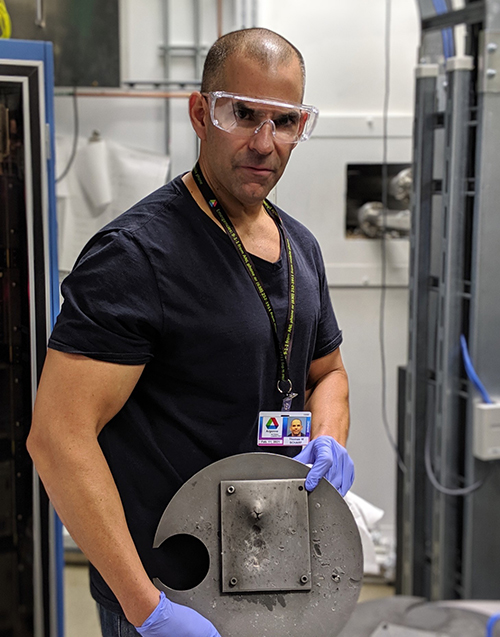
Materials Science and Engineering Professor Thomas Scharf and his team are working with the Army Research Lab to develop stronger protection for the military.
 Working with ARL’s Protection and Materials and Manufacturing Science Divisions, he and his group at UNT have been sintering novel, lightweight ceramic composites with the goal to create stronger and better body armor. It’s a process where researchers use heat and pressure to form a solid from powder without going so far as to turn it to liquid or vapor.
Working with ARL’s Protection and Materials and Manufacturing Science Divisions, he and his group at UNT have been sintering novel, lightweight ceramic composites with the goal to create stronger and better body armor. It’s a process where researchers use heat and pressure to form a solid from powder without going so far as to turn it to liquid or vapor.
“Right now, new technology for military weapons and projectiles are leading in development, and military body armor needs to catch up to these emerging threats, hence the need for improved solider protection,” said Scharf.
The team’s overarching objective is to determine how important traditional properties like hardness, fracture toughness, and bend strength are when new materials for ballistic applications are developed.
“The interrelationships between these properties will hopefully provide future insight into long-standing questions on how important and relevant traditional quasi-static strength and toughness measurements and corresponding mechanisms are and how they can be manipulated for military weaponry or armor,” said Scharf.
Scharf began collaborating in January 2019 as a Joint Faculty Appointee with the Weapons and Materials Research Directorate scientists at ARL’s Aberdeen Proving Ground. He works for the Impact Physics Branch and Ceramic and Transparent Materials Branch.
